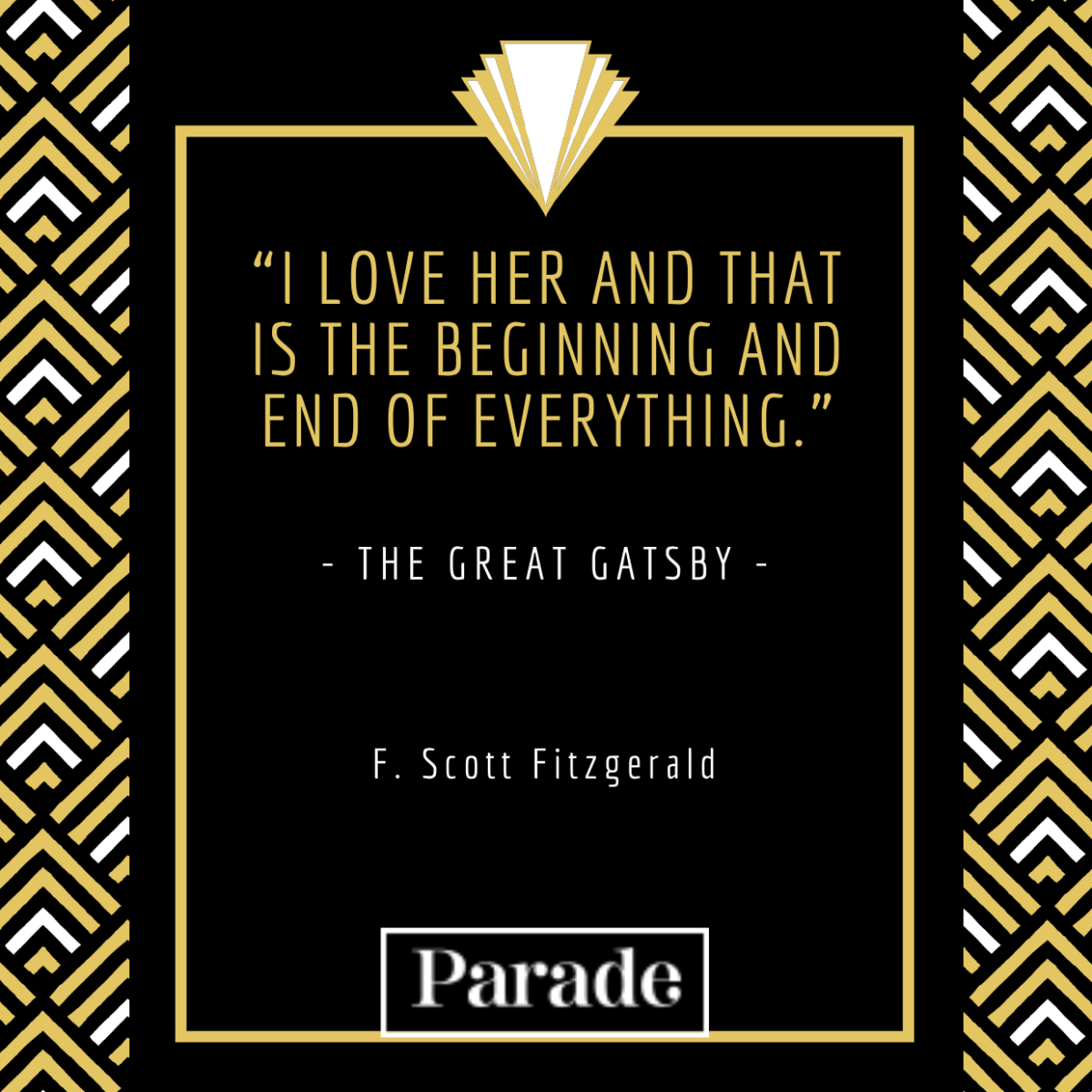F. Scott Fitzgerald's Great Gatsby: Sources And Inspiration In Real Life

Table of Contents
The Roaring Twenties: A Historical Context for Gatsby's World
The Jazz Age, the era depicted in The Great Gatsby, profoundly impacted the novel's atmosphere and themes. Understanding the historical context is crucial to appreciating Fitzgerald's work.
The Jazz Age and its Influence on the Novel's Atmosphere
- Economic Boom: The post-World War I era witnessed unprecedented economic growth, creating a climate of excess and lavish spending.
- Social Change: Traditional social norms were challenged, leading to a more liberated and expressive culture.
- Prohibition: The ban on alcohol fueled the rise of speakeasies and organized crime, adding a layer of moral ambiguity to the era.
- Flapper Culture: Young women embraced shorter hemlines, bobbed hair, and a carefree attitude, defying societal expectations.
- Artistic Flourishing: The arts thrived, with jazz music, literature, and visual arts reflecting the dynamism and anxieties of the time.
- The Rise of the American Dream (and its dark side): The belief in self-made success fueled ambition but also created a stark contrast between the wealthy elite and the struggling working class, a dichotomy vividly portrayed in Gatsby's world.
This atmosphere of exuberance, coupled with underlying social tensions and moral decay, provided the perfect backdrop for Gatsby's tragic pursuit of the American Dream. The lavish parties, the opulent mansions, and the moral compromises – all reflect the complexities of the Roaring Twenties.
The Rise of the Self-Made Millionaire: Gatsby's Rags-to-Riches Myth
The 1920s saw a surge in self-made millionaires, individuals who amassed vast fortunes through various ventures. These "new rich" often lacked the social graces and established connections of the old money elite, mirroring Gatsby's struggle for acceptance in high society. His relentless pursuit of wealth and status directly reflects the era's obsession with material success and its potential for both fulfillment and disillusionment. The American Dream, while promising, often proved elusive, leading to disillusionment and moral compromises, just as it did for Gatsby.
Real-Life Inspirations for Key Characters in The Great Gatsby
Fitzgerald's personal life and observations of his contemporaries undoubtedly shaped the characters in The Great Gatsby.
Thomas Buchanan: The Prototype for Tom Buchanan?
While no single individual perfectly mirrors Tom Buchanan, several real-life figures might have contributed to his creation. Some scholars suggest that Fitzgerald drew inspiration from wealthy, powerful men he knew, characterized by their arrogance, infidelity, and disregard for others. These individuals often possessed a sense of entitlement stemming from their privileged backgrounds, a characteristic vividly depicted in Tom’s personality. Further research into the social circles Fitzgerald frequented during the 1920s could reveal more specific connections.
Zelda Fitzgerald: The Muse and the Shadow of Daisy Buchanan
Zelda Sayre Fitzgerald, F. Scott's wife, served as a significant inspiration for Daisy Buchanan. Their tumultuous relationship, marked by passion, infidelity, and ultimately, heartbreak, mirrors the complexities of Gatsby and Daisy's romance. Zelda's beauty, social charm, and restless spirit are undeniably reflected in Daisy's character. The novel offers a poignant reflection of their own complex and ultimately tragic relationship.
Edward "E.J." Wilson: The Tragic Counterpoint to Gatsby
George Wilson, the tragic garage owner, represents the less fortunate segment of society, often overlooked amidst the glamour and excess of the wealthy elite. His character serves as a stark contrast to Gatsby's opulent lifestyle, highlighting the social and economic inequalities of the era. While there's no direct real-life counterpart for Wilson, his character embodies the struggles of many working-class individuals during the Roaring Twenties. He is a poignant reminder of the human cost of societal divisions and the American Dream's uneven distribution.
Locations and Events that Shaped the Narrative
The novel's setting and the descriptions of parties are deeply rooted in the realities of Long Island in the 1920s.
Long Island's Golden Age and the Setting of West Egg and East Egg
Long Island, during the 1920s, was a hub of social activity, particularly in areas like West Egg and East Egg. Fitzgerald masterfully uses these locations to symbolize the stark class divisions of the era. West Egg, inhabited by the newly rich, contrasts sharply with the established wealth and social prominence of East Egg. The geographical distinction mirrored the social stratification, contributing significantly to the novel's thematic richness.
Real-life Parties and Social Gatherings that Inspired Gatsby's Extravagant Celebrations
Fitzgerald was known to frequent lavish parties during the Jazz Age. These events, filled with exuberance, excess, and a sense of unrestrained revelry, heavily influenced the descriptions of Gatsby's legendary celebrations. Contemporary accounts of similar parties during this period support the realism of Fitzgerald's portrayal, showcasing the extravagance and social dynamics of the era. The parties in the novel are not merely fictional constructs; they are evocative representations of real-life events, highlighting the excesses and superficiality of the Jazz Age elite.
Conclusion: Delving Deeper into the Real-Life Roots of The Great Gatsby
In conclusion, The Great Gatsby's enduring appeal lies not only in its captivating narrative but also in its deep connection to the realities of the Roaring Twenties. The historical context, the real-life inspirations behind its characters, and the realistic depiction of Long Island's social landscape all contribute to its timeless relevance. By exploring the real-life influences in The Great Gatsby, we gain a richer understanding of both the novel and the era it represents. We encourage further exploration of the historical context of The Great Gatsby and its real-life figures through additional research, discussions, and perhaps delving into biographies of Fitzgerald and his contemporaries to uncover the full extent of the novel’s intricate relationship with its historical context. This deeper understanding enhances the appreciation of Fitzgerald's masterpiece and its continued fascination for readers worldwide.

Featured Posts
-
 A Critical Look At Lara Croft Tomb Raider The Cradle Of Life
May 13, 2025
A Critical Look At Lara Croft Tomb Raider The Cradle Of Life
May 13, 2025 -
 A Deep Dive Into Doom The Dark Ages
May 13, 2025
A Deep Dive Into Doom The Dark Ages
May 13, 2025 -
 Where To Invest A Guide To The Nations Newest Business Hotspots
May 13, 2025
Where To Invest A Guide To The Nations Newest Business Hotspots
May 13, 2025 -
 The Trump Administration And Drug Prices Executive Order Explained
May 13, 2025
The Trump Administration And Drug Prices Executive Order Explained
May 13, 2025 -
 Chris Browns Financial Backing Helped Tory Lanezs New Album
May 13, 2025
Chris Browns Financial Backing Helped Tory Lanezs New Album
May 13, 2025
